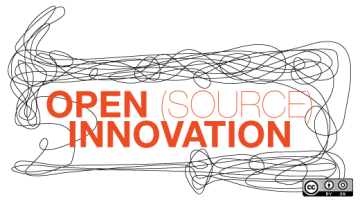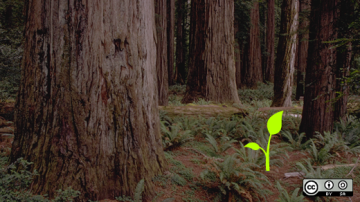In the first part of this article series—an extended review of the book How Innovation Works by Matt Ridley—I examined Ridley's characterization of innovation: it's gradual, incremental, and collective, and involves extensive collaboration between parties. This, I argued, is why open organization principles are so important and play a major role in fostering innovation.
In part two of the series, I reviewed Ridley's assessment of the environments where innovation and discovery thrive, and I demonstrated some essential characteristics of the innovation process.
Now, in this concluding part of my review, I bring these ideas alive by recounting case studies of innovative discoveries throughout history.
Innovation throughout history
In How Innovation Works, Ridley mentions that innovation is mostly a "bottom-up phenomenon." For example, throughout the 19th century, as Britain and Europe developed new railways, the steel industry, new applications for electricity, the textile industry, and many other breakthroughs, governments weren't involved. Only after the fact did governments play the role of regulator and standards creator. Sometimes, governments even played the role of the customer or user.
The same was true in America in the early 20th century. There were few public subsidies for research and development before 1940. And after World War II, the Japanese miracle was a function of private corporations backed by a vast ecosystem of small enterprises. Most efforts resembled open organizations—a modest group of dedicated hands-on, ground floor members. That's where most innovation originated, on the ground floor according to open organization principles.
By contrast, the Soviet Union was a very clear case of a public governmental entrepreneurial state; it funded a great deal of research centrally, and allowed virtually no involvement from private enterprise. Innovation in transportation, food production, health care, and consumer products suffered as a result. (In this environment open organization principles were not in use.)
Innovations come from humble places, Ridley's argues, and large, bureaucratic corporations were not particularly good at developing innovative products. Instead, small, loosely assembled communities (open organizations with front line teams) have been more innovative throughout history. They have been far more capable of exploring new concepts, particularly if they have a wide base of contributions to work with.
Let me review two historical examples of this, drawn from Ridley's work (one brief, one lengthier).
Lighting every house (the light bulb)
Who invented the light bulb? Easy answer: Thomas Edison.
But at least a dozen other people were working on similar technologies around the same time, even before Edison, as Ridley documents in detail in How Innovation Works. Edison, however, gets recognition for the invention.
Through some 50,000 trial-and-error experiments, a full complement of staff developed a usable, affordable light bulb for interior and room lighting (Edison's team tested roughly 6,000 plant materials until it found the right kind of bamboo for the bulb's filament). The invention made both oil lamps and gas lamps things of the past. Perhaps better than anyone else at the time, Edison knew that innovation was largely a team effort. He hired groups of skilled craftsmen and scientists (totalling 200 people in all) and worked them incredibly hard. Their collaboration, iterative and adaptive testing, and sharing eventually led to the registration of more than 400 patents in six years. Edison supported his innovative teams extensively, stuffing his workshops with every kind of material, tool, and book. His goal was not simply to inspire invention; it was to turn ideas into practical, reliable, and affordable items—the result of extensive application of open organization principles.
Two approaches to flight (the powered aircraft)
Now let me offer a more detailed example, one focused on the innovation of powered aircraft. To better illustrate the advantage of an open organizational approach, I'll juxtapose two approaches to this innovation.
Samuel Langley's approach
In 1903, the East Coast of the United States saw the first airplane flight by Samuel Langley. It impressed the US government, which expressed a desire to invest in the development of powered flight (powered flight, of course, would allow people to travel longer distances).
Initially, the American government supported Langley's experiments with an investment of $50,000. Later, it offered another US$20,000. Langley had convinced the government he could build a powered plane that would stay in the air longer than a simple glider (Langley was a professor from New England, an astronomer, and a well-connected head of the Smithsonian Institute in Washington, DC, so his reputation would have seemed to support his claims).
Because of his confidence, he decided to keep all his research and experiments confidential. He could not have been more closed in his approach to research and experimentation.
This went on for seven years, until a test plane was finally ready for presentation to the government. Langley was not a hands-on experimenter and was not willing to pilot his prototype plane himself (he commissioned Charles Manly). The plane crashed after flying just a short distance, to everyone's disappointment. Langley's reputation never recovered. The fiasco led to the US government pulling all funding for the project, and it gave up on powered flight after a decade of wasting money.
From the perspective of someone thinking with open organization principles, Langley would seem to have done everything wrong. He spent lots of money, depended on a single authority (the government), consulted with very few outside people, and built the full aircraft from scratch instead of building and testing components in an incremental way, by experimenting with different designs, shapes, sizes, and weights. He built no community to work on the project. He included only the minimum necessary outsiders. He was not transparent of his activities or concerns. He did not establish step-by-step milestones in which he could make adaptations if need be. And, he collaborated with as few people as possible.
The Wright brothers' approach
But just south of Langley's failure, in an area called Kitty Hawk, with almost nobody watching, two brothers from Ohio were busy achieving innovation in powered flight, and by spending only a fraction of what Langley did. They were Orville and Wilbur Wright.
The Wright brothers' initial test flight lasted 12 seconds and traveled 40 yards (37 meters). Their second flight (later that day) lasted almost one minute and covered more than 800 feet (244 meters). Just five people were present to observe these successful powered flights.
Thinking again with open organization principles, we might say the Wright brothers did everything right.
These two brothers were not well-known researchers (or even engineers for that matter). They simply were experienced bicycle builders and had a small shop. They were diligent craftsmen and loved building things. They simply wanted to address the challenges and problems of powered flight through building an aircraft. Fueled by those passions, they started building a development team (community building), which included others in the project to bring in valued experience. They included key outside people. They were very transparent regarding their activities and concerns (more on this in a moment). They established step-by-step milestones in which they could make adaptations if need be.
Moreover, they collaborated with as many people as they needed to, gathering expertise where they could find it. First they wrote to Otto Lillienthal in Frankfurt, Germany, a famous designer of gliders. They also approached a rather eccentric French-American in Chicago by the name of Octave Chanute, who studied the powered flight problems to overcome and published papers on them. These are examples of inclusivity at its best—approaching people far different than them to achieve something. Thorough documentation of the Wright brothers' collaboration with Chanute (and his extensive network of like-minded thinkers) helped solidify their basic design for a powered aircraft. And just by luck, someone the Wright brothers hired to work in the bicycle shop was an extremely good mechanic and loved designing machines. His name was Charlie Taylor. The internal combustion engine was just being developed at that time, and the Wright brothers knew that the motors on the market were too heavy for an aircraft, so Charlie built one from scratch, using aluminium (a much lighter material).
This more open approach to innovating in the field of powered aircraft is the one that eventually gave rise to the inventions (and industry) we enjoy today and brought the Wright brothers fame.
History lessons
Think about both those examples, two case studies of innovation through open organization principles. Both indicate that, for any innovation, quite a few people are required (not lone individuals). In both cases, inventors needed to "cross-pollinate" ideas in two ways:
- concurrently, working together directly, and
- learning sequentially over time.
Our lessons from history illustrate these approaches to innovation. Innovation happens when someone creates a community while working on a problem. Through concurrent community collaboration, that group might make discoveries that lead to an innovation. Sometimes, however, those communities fail. But because they document their work as they collaborate, another person (and community) can replicate what they've done and improve upon it (sequential innovation)—perhaps succeeding where the first group did not.








Comments are closed.